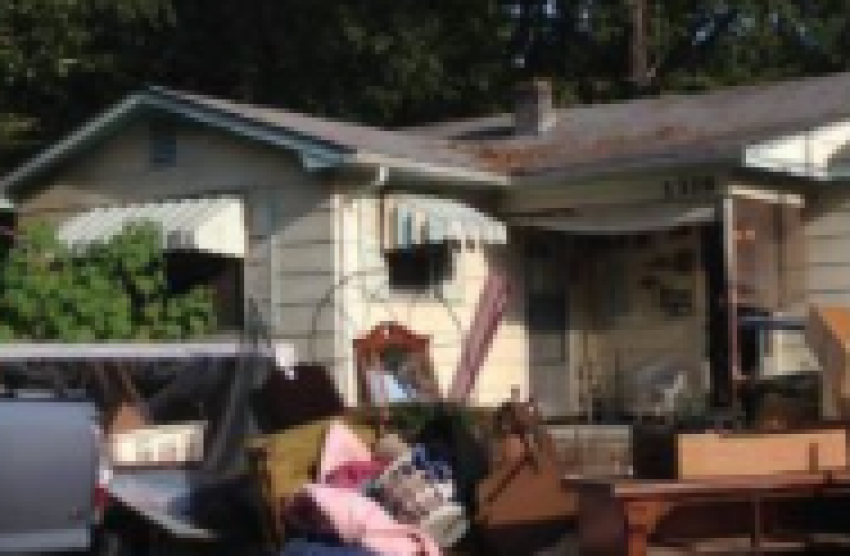
Response to Hurricane Matthew
November 3, 2016
 Written by: HFI Reservist, Alan Weisenberger
Written by: HFI Reservist, Alan Weisenberger
Our team of six Hope Force International (HFI) staff and Reservists formed the initial response team to Hurricane Matthew. We met in Nashville and drove our equipment to Fayetteville, NC. The original plan was to head to Florida, but as Hurricane Matthew made its trip up the coast, it became apparent that we could do the most good in North Carolina. Additional Reservists and volunteers joined us in the following days.
Through a string of relationships (which is how most things get done), we connected with city officials in Lumberton, NC. They were thrilled to have us involved, but we had to wait for the water to recede before we could get into the area to begin work. We set up our initial base of operations in an empty house near Fayetteville (it was up for sale, owned by a friend of a friend…). We worked on eight homes in the Fayetteville area while waiting five days for the water level to go down in Lumberton.
Some of the homes in Fayetteville were owned by widows that we connected with through local churches. Fort Bragg is near Fayetteville, so we also had the privilege of helping the families of some military men stationed there.
Lumberton is a city of about 21,000 people. It is an economically challenged area, and has been recognized as the “most dangerous city in NC”, “fourth most dangerous city in the US”,  home of the “worst NC drivers” (fatalities/capita), and the “sixth worst place in NC to get a job”. Nevertheless, the city officials we engaged with were impressive, dedicated, hardworking and caring people. They were excited to have HFI engaged as much for the emotional & spiritual care we brought as for the physical labor we provided. During the time I was there, HFI brought in three chaplains in response to the city’s requests for help.
home of the “worst NC drivers” (fatalities/capita), and the “sixth worst place in NC to get a job”. Nevertheless, the city officials we engaged with were impressive, dedicated, hardworking and caring people. They were excited to have HFI engaged as much for the emotional & spiritual care we brought as for the physical labor we provided. During the time I was there, HFI brought in three chaplains in response to the city’s requests for help.
Everyone we met in Lumberton defied the city’s negative reputation. Woody is a good example. When the levee was breached and water flooded into his neighborhood, Woody spent  the night making trips into his neighborhood in a boat rescuing those who couldn’t get out. His own home was badly damaged and will require a lot of work to repair. Decades of remodels left multiple layers of drywall and paneling, and layers of flooring upon flooring – and the flood waters settled between each of those layers. It all needed to be removed so his home could dry out properly.
the night making trips into his neighborhood in a boat rescuing those who couldn’t get out. His own home was badly damaged and will require a lot of work to repair. Decades of remodels left multiple layers of drywall and paneling, and layers of flooring upon flooring – and the flood waters settled between each of those layers. It all needed to be removed so his home could dry out properly.
The hardest part of disaster relief deployments is having to leave knowing there’s still so much work to be done. It will be months or even years before some of these people recover from the physical and emotional trauma. It is our “terrible privilege” to be able to engage with a few and do what we wish we could do for all. But our belief and prayer is that some of those we meet will find the source of peace and joy in Christ that far surpasses the losses they’ve experienced.





